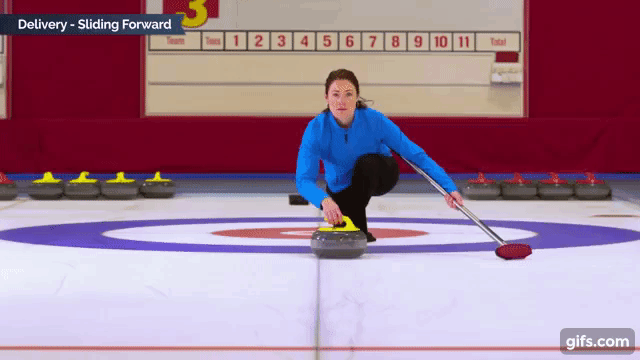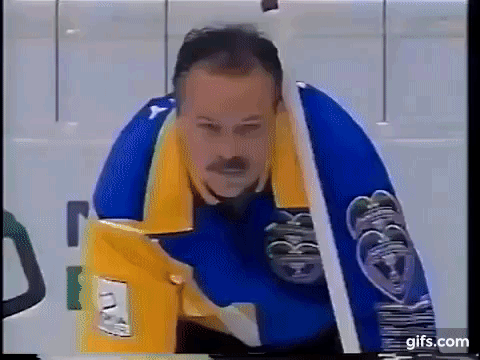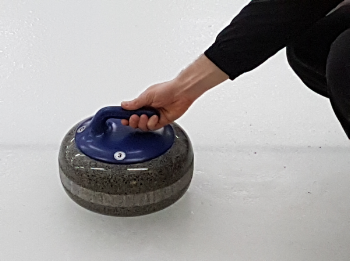Hear more about this subject and other curling topics from Jonathan Havercroft on Rocks Across the Pond: A Curling Podcast available on iTunes, Google Play, Stitcher, and TuneIn
We had an interesting twitter conversation this week prompted by Amanda from the Tulsa Curling Club’s question about what to do when an opponent intentionally burns a stone. She asked: “What are the consequences if the OTHER team intentionally burns a stone to protect their other stones?”
This is a situation that comes up pretty rarely, but it important to think through. One of my favourite things about curling is that it is largely a self-policed sport. Even at the highest levels, the umpires are largely deferential to the players, intervening normally to clarify a rules dispute rather than to penalize a team.
But because curling is self-policing there is always the risk that a player or players may take advantage of the situation and cheat. The situation that Amanda outlines is one of a team cheating – although they may not have realized they were doing that.
First, let’s be clear on what a burned stone is and what the rules and expectations are around how to handle a burned stone. I will work off the World Curling Federation rulebook because that governs the competitions I play and coach in, but the rules are pretty much the same regardless of the member association. Rule R.8 “Touched moving stone” describes what to do in the event of a burned stone. It covers three different situations:
1. Between the t-line and the hog line at the playing end
2. After the hog line at the playing end
3. If the moving stone is touched by either the other team or an external force
In situation one (before the stone crosses the hog line) the offending team must stop the stone immediately and remove it from play. There are no ifs and or buts about this. If you or your sweeping partner burn the stone before the hog line, then anything other than stopping the stone are removing it from play is cheating.
The second situation is more interesting and where a lot of disputes can arise. Once the stone crosses the hog line, if a team burns the stone, then they must let the stone and any stones it touches come to rest and then immediately declare the infraction. Doing anything other than that is cheating.
We’ll set aside situation three as raises issues about rethrowing the stone that don’t concern us here. You can look that part up if you are curious.
The skip of the non-offending team then has three choices to make in the event of a burned stone between the t-line and hog line at the playing end. They can either:
1. Let the outcome of the shot stand
2. Remove the delivered stone from play and return all the other stones to their original positions before the shot was thrown
3. Place the stones where they reasonable think they would have ended up without the burned stone
To return to the case Amanda raised on Twitter, the appropriate course of action when another team intentionally burns its own stone to avoid the negative consequence of the shot is to put the stones where they would have gone if the burn had not occurred. The team is trying to avoid this outcome, so they don’t have much of an argument to say that it would not have happened.
The burned stone rule raises a few other issues. First, it has become normal practice in both club and competitive play for teams, in the case of minor burned stones to let the outcome of the shot stand. This is often seen as being in the spirit of curling and not wanting to win by a burned stone, but on a made shot.
That is fair enough if that is what your team wants to do. But it is unfair, dare I say bad sportsmanship, to expect that your opponent will apply option 1. If you burn a stone all you can do is declare the foul and then let the opponent apply whichever of those three options they think is fair.
We have seen some controversy about this in recent years. At the 2018 Olympics, team Homan received a lot of social media backlash when they opted to remove a burned Danish stone rather than let it stand. Team Shuster faced a similar backlash in 2016 when they placed a burned Japanese stone where they thought it would have ended up rather than where it came to rest.
In both cases the other team committed the foul, and the skips correctly applied to rule. While you as a player may have chosen a different option, both Shuster and Homan were fully within their rights to apply the rule that they did.
So keep this in mind the next time you either burn a rock or have to decide how to burn a rock. If you are on the offending team you must declare the foul, otherwise you are cheating. You also have to accept whatever decision the other team makes as long as it is in the rules.
You can apply any of the three options if you are on the non-offending team. So if someone tries to intentionally burn a stone to escape a bad outcome for them, the obvious solution is to place the stones where they would have ended up had they not burned the stone.





 Mark Ngo doing the Okie Toe-Tuck
Mark Ngo doing the Okie Toe-Tuck



